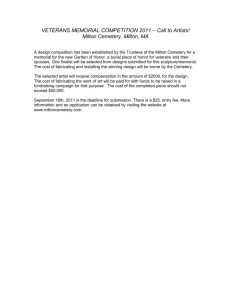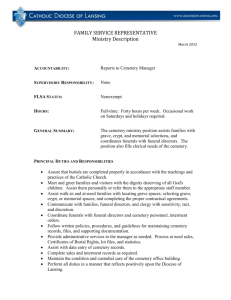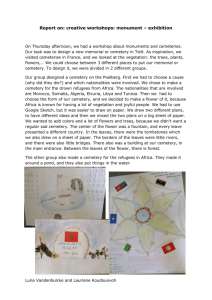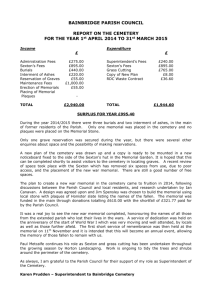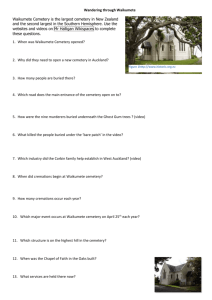Alexander Waddell Mackay - The Trades House of Glasgow Virtual
advertisement
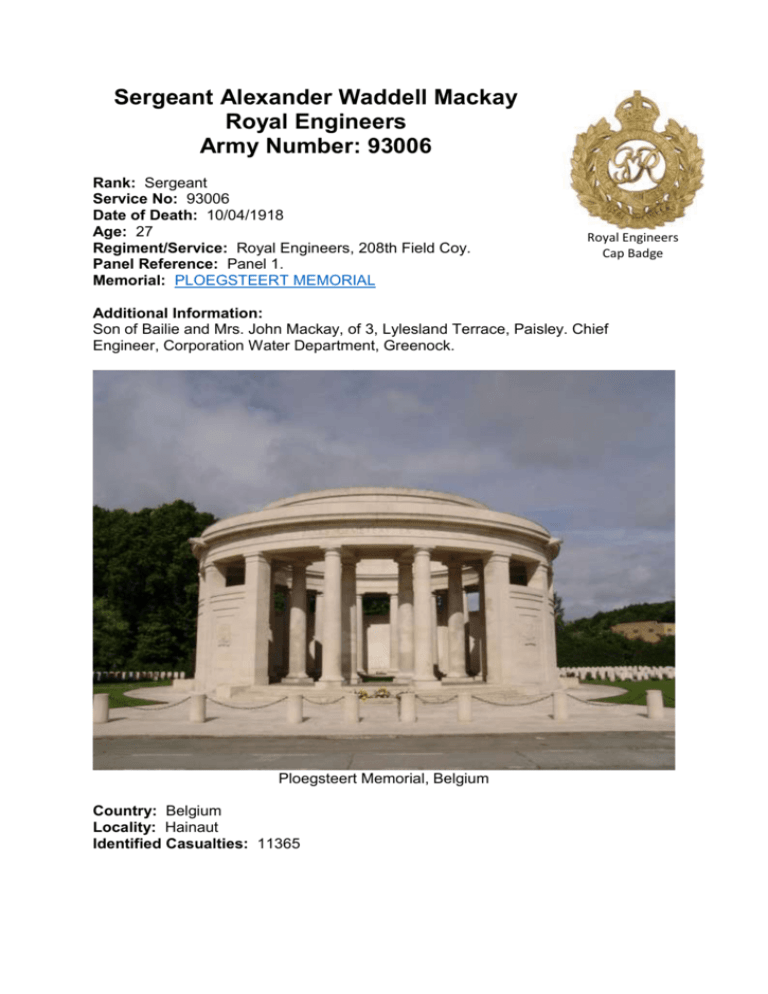
Sergeant Alexander Waddell Mackay Royal Engineers Army Number: 93006 Rank: Sergeant Service No: 93006 Date of Death: 10/04/1918 Age: 27 Regiment/Service: Royal Engineers, 208th Field Coy. Panel Reference: Panel 1. Memorial: PLOEGSTEERT MEMORIAL Royal Engineers Cap Badge Additional Information: Son of Bailie and Mrs. John Mackay, of 3, Lylesland Terrace, Paisley. Chief Engineer, Corporation Water Department, Greenock. Ploegsteert Memorial, Belgium Country: Belgium Locality: Hainaut Identified Casualties: 11365 Location Information The Ploegsteert Memorial stands in Berks Cemetery Extension, which is located 12.5 Kms south of Ieper town centre, on the N365 leading from Ieper to Mesen (Messines), Ploegsteert and on to Armentieres. From Ieper town centre the Rijselsestraat runs from the market square, through the Lille Gate (Rijselpoort) and directly over the crossroads with the Ieper ring road. The road name then changes to the Rijselseweg (N336). 3.5 Kms along the N336 lies a fork junction with the N365. The N365, which forms the right hand fork, leads to the town of Mesen. The Cemetery lies 3 Kms beyond Mesen on the right hand side of the N365, and opposite Hyde Park Corner Royal Berks Cemetery. Visiting Information The sounding of the Last Post takes place at the memorial on the first Friday of every month at 7 p.m. The Panel Numbers quoted at the end of each entry relate to the panels dedicated to the Regiment served with. In some instances where a casualty is recorded as attached to another Regiment, his name may alternatively appear within their Regimental Panels. Please refer to the on-site Memorial Register Introduction to determine the alternative panel numbers if you do not find the name within the quoted Panels. Historical Information The PLOEGSTEERT MEMORIAL commemorates more than 11,000 servicemen of the United Kingdom and South African forces who died in this sector during the First World War and have no known grave. The memorial serves the area from the line Caestre-Dranoutre-Warneton to the north, to Haverskerque-Estaires-Fournes to the south, including the towns of Hazebrouck, Merville, Bailleul and Armentieres, the Forest of Nieppe, and Ploegsteert Wood. The original intention had been to erect the memorial in Lille. Most of those commemorated by the memorial did not die in major offensives, such as those which took place around Ypres to the north, or Loos to the south. Most were killed in the course of the day-to-day trench warfare which characterised this part of the line, or in small scale set engagements, usually carried out in support of the major attacks taking place elsewhere. It does not include the names of officers and men of Canadian or Indian regiments (they are found on the Memorials at Vimy and Neuve-Chapelle) and those lost at the Battle of Aubers Ridge, 9 May 1915, who were involved in the Southern Pincer (the 1st, 2nd, Meerut and 47th Divisions - they are commemorated on the Le Touret Memorial). BERKS CEMETERY EXTENSION, in which the memorial stands, was begun in June 1916 and used continuously until September 1917. At the Armistice, the extension comprised Plot I only, but Plots II and III were added in 1930 when graves were brought in from Rosenberg Chateau Military Cemetery and Extension, about 1 Km to the north-west, when it was established that these sites could not be acquired in perpetuity. Rosenberg Chateau Military Cemetery was used by fighting units from November 1914 to August 1916. The extension was begun in May 1916 and used until March 1918. Together, the Rosenberg Chateau cemetery and extension were sometimes referred to as 'Red Lodge'. Berks Cemetery Extension now contains 876 First World War burials. HYDE PARK CORNER (ROYAL BERKS) CEMETERY is separated from Berks Cemetery Extension by a road. It was begun in April 1915 by the 1st/4th Royal Berkshire Regiment and was used at intervals until November 1917. Hyde Park Corner was a road junction to the north of Ploegsteert Wood. Hill 63 was to the north-west and nearby were the 'Catacombs', deep shelters capable of holding two battalions, which were used from November 1916 onwards. The cemetery contains 83 Commonwealth burials of the First World War and four German war graves The cemetery, cemetery extension and memorial were designed by Harold Chalton Bradshaw, with sculpture by Gilbert Ledward. The memorial was unveiled by the Duke of Brabant on 7 June 1931.
